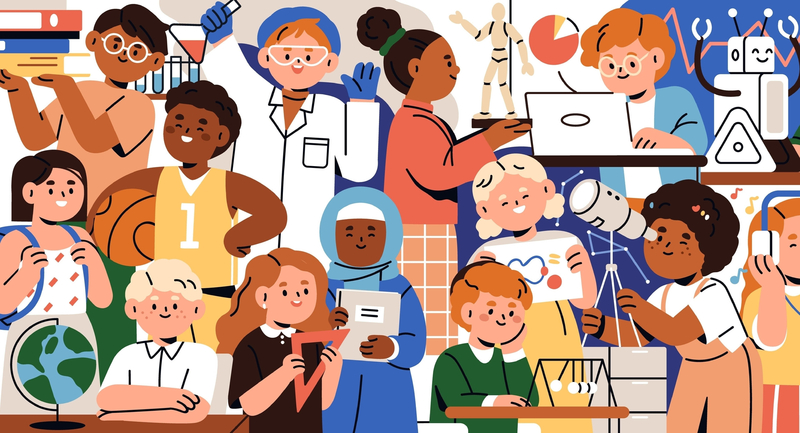For the teens in the detox program, going “cold turkey” spawned a wave of emotions—denial, resentment, and anger. Gradually, though, with frank group conversations, they came to see that a habit that had begun as way to pass time and socialize was now consuming their lives, harming friendships, and even spawning abusive behavior. Over time, as the cravings of their addiction lessened, they began to feel, as one student put it, “strangely happy.”
“It’s cheered me up for some reason,” another boy reported. “I feel different. I can concentrate more.” By the end of a full week of detox, students had re-engaged with their friends and found time to rekindle forgotten interests like reading books. When the program ended, though, most reverted—to an unhealthy relationship with their smartphones (Berdik, 2015).
These teens were part of a growing trend in which people voluntarily unplug from the Internet for a few days to rebalance their digital and real lives. Cutting the Internet cord, they find, makes them feel less frenetic. By tamping down their digital cravings, they’re able to attend to deeper longings, including fostering more meaningful ties with others.
What does this have to do with teachers connecting with students? Perhaps a great deal.
Connections on the Decline
Let’s start with this factoid: an analysis of 72 surveys of nearly 14,000 college students conducted since 1979, in which students responded to statements like “I try to look at everybody’s side of a disagreement before I make a decision” and “I often have tender, concerned feelings for people less fortunate than me,” found that today’s students demonstrate the lowest levels of empathy—a 40 percent drop—since these studies began (Konrath, O’Brien, & Hsing, 2011). Although there’s no scientific way to isolate the exact cause of these declines, Sherry Turkle (2015), an MIT professor who has studied the psychology of online connectivity for 30 years, has observed that the ability to engage in deep, empathic conversations is becoming a lost art.
She notes that many students—even those who say they can move deftly between the real and digital worlds—admit that something has gotten lost in our digital age, starting with their own parents’ attention as they futz with phones at dinner, the park, or school events. Students also report something is missing in their real-life conversations with friends. This isn’t surprising, as studies have found that the mere presence of a phone on the table makes our conversations shallower; we tend to stick to lighter topics as we assume we’ll get interrupted (Turkle, 2015). As a result, we’re less apt to kick around big ideas, read others’ emotions, or have the sorts of silences that offer openings to dive into deeper issues.
By tamping down their digital cravings, students were able to foster more meaningful ties with others.
Restoring the Art of Conversation
Recently, Kentucky teacher Paul Barnwell (2014) spotted this problem among his high school students. One day, he asked them to put down the smartphones they’d been furtively using under their desks and announced that their next project would be to “practice a skill they all desperately needed: holding a conversation.” After a long, bewildered pause, one student raised his hand. “How is this going to work?”
Earlier, Barnwell had watched his students trying to interview one another for an assignment aimed at getting them to grasp deep knowledge of a topic (education reform). Most of them never got beyond scripted questions to engage in more spontaneous, authentic dialogue. Barnwell realized that “conversational competence may be the most overlooked skill we fail to teach our kids.” Moreover, “in our zealous rush to meet 21st century demands—e-mailing assignments, customizing projects for tablets and laptops, and allowing students to BYOD (Bring Your Own Device), we aren’t asking students to think and communicate in real time.” As a clever, “blended” solution, he asked students to record conversations on their smartphones, watch them later, and self-assess their conversational skills.
The Importance of Teacher Empathy
In many ways, Barnwell’s approach—challenging kids to engage in critical thinking while demonstrating empathy—reflects what Judith Kleinfeld (1972) discovered while conducting in-depth case studies of teachers in Alaska to figure out what made some teachers more effective than others with native Alaskan students. The best teachers, she found, displayed “high personal warmth with high active demandingness.” All kids worked hard to please these so-called “warm demanders,” who showed them empathy and respect.
Kleinfeld’s qualitative research has been confirmed through numerous quantitative studies, including those in a meta-analysis (Cornelius-White, 2007) that found teacher warmth and empathy to be strongly linked to student success. Similarly, Susan Engel (2011) has observed that a key predictor of student curiosity—as demonstrated by the amount of time students spent tinkering with a “curiosity box”—was teacher warmth, namely “how much the teacher smiled and talked in an encouraging manner.”
Recently, a team from Stanford split math teachers into two groups, one that engaged in a learning and writing exercise on the importance of teacher empathy and another that focused on the importance of technology (Okonofua, Paunesku, & Walton, 2016). A year later, suspension rates of students in the classrooms of teachers focused on empathy had fallen to half the suspension rates of teachers focused on technology (4.6 percent vs. 9.8 percent)—not because more empathetic teachers turned a blind eye to infractions, but because as student-teacher relationships improved, so did student behavior.
Recharging Their Batteries
Declining levels of student empathy, students’ struggles to have meaningful conversations, and the power of teacher empathy may point us toward this conclusion: Today’s “cyber youth” need, perhaps as never before, for us to show (and model) empathy, giving them something that’s in increasingly short supply in their lives—a real human connection. Although we cannot expect our students (or ourselves) to permanently digitally detox, we can help balance their “high tech” lives with “high touch” learning environments.









